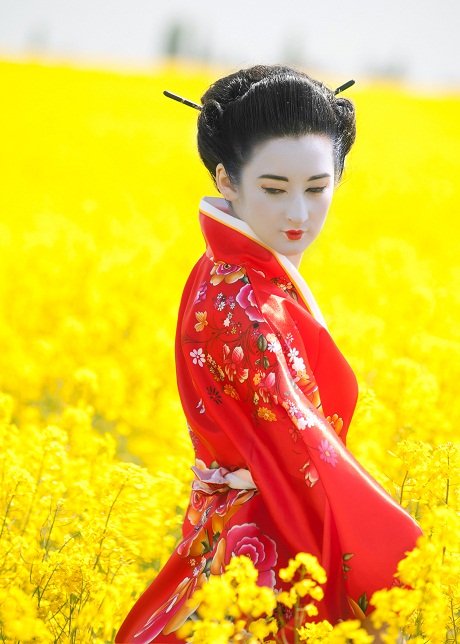Learn about the traditional Japanese dress known as the kimono and the high esteem in which it is held throughout Japan.
The kimono is the trademark attire for the land of the rising sun. In Japanese culture the word simply means clothing. On the global scene however it is a well recognized garment associated with Japanese culture.
The traditional Japanese kimono comes in a variety of styles. The reasons behind the styling are many and the style of kimono differs according to the occasion. Although kimonos are generally associated with women, the dress is and has been worn by men as well in Japan.
Today the use of the kimono is limited either to the dying generation of Japanese women who are used to the ancient tradition and at other times by regular people on special occasions.
The most commonly used fabric for the purpose of making kimonos is silk. This makes the kimono a high end dress that not everybody can afford. Hence the kimono is at once recognized as a status symbol in Japanese culture. The elite often gifted their children with their very first kimono.
Throughout the history of Japan the kimono has been predominantly worn by the women. The kimono is still worn by many women as part of tradition on many occasions. You will find women to be dressed up in a kimono when attending any event that is related to arts.
The kind of kimonos worn by young single women differs from those worn by women of age. The younger lot has a more colorful variety of kimonos to choose from that have longer sleeves and a contrasting bright colored sash to compliment it. The traditionally styled kimono has a simple pattern on it and is casual in style.
Japanese wedding traditions make full use of the kimono. A traditional wedding ceremony will have the groom undergoing a series of clothing changes revolving around the kimono. The groom must wear a heavy white kimono known as shiromuku with his family crest along with a short coat known as the haori.
Another occasion at which kimono is sort of the official dress is at a funeral ceremony. Men and women attend funerals dressed in all black kimonos out of respect. It is the colour of the tie for men in black kimonos that determine where he is headed. A black tie accompanies the black kimono for a funeral whereas a contrasting white tie denotes that the individual is going for a wedding party.
Traditionally mothers hand down their kimonos to their young ones. This happens through a series of lessons through which the younger ladies are taught how to put one on. The kimono is a rather tough dress to get in to hence the daughters need to be told and trained to perform the task.
When putting on the kimono you start off with the tabi which are the white socks. Then you put on the undergarments on top of which you wrap around the skirt. The last addition is the kimono which has its left side coming on top of the right side. An obi is used to hold the kimono in place.





